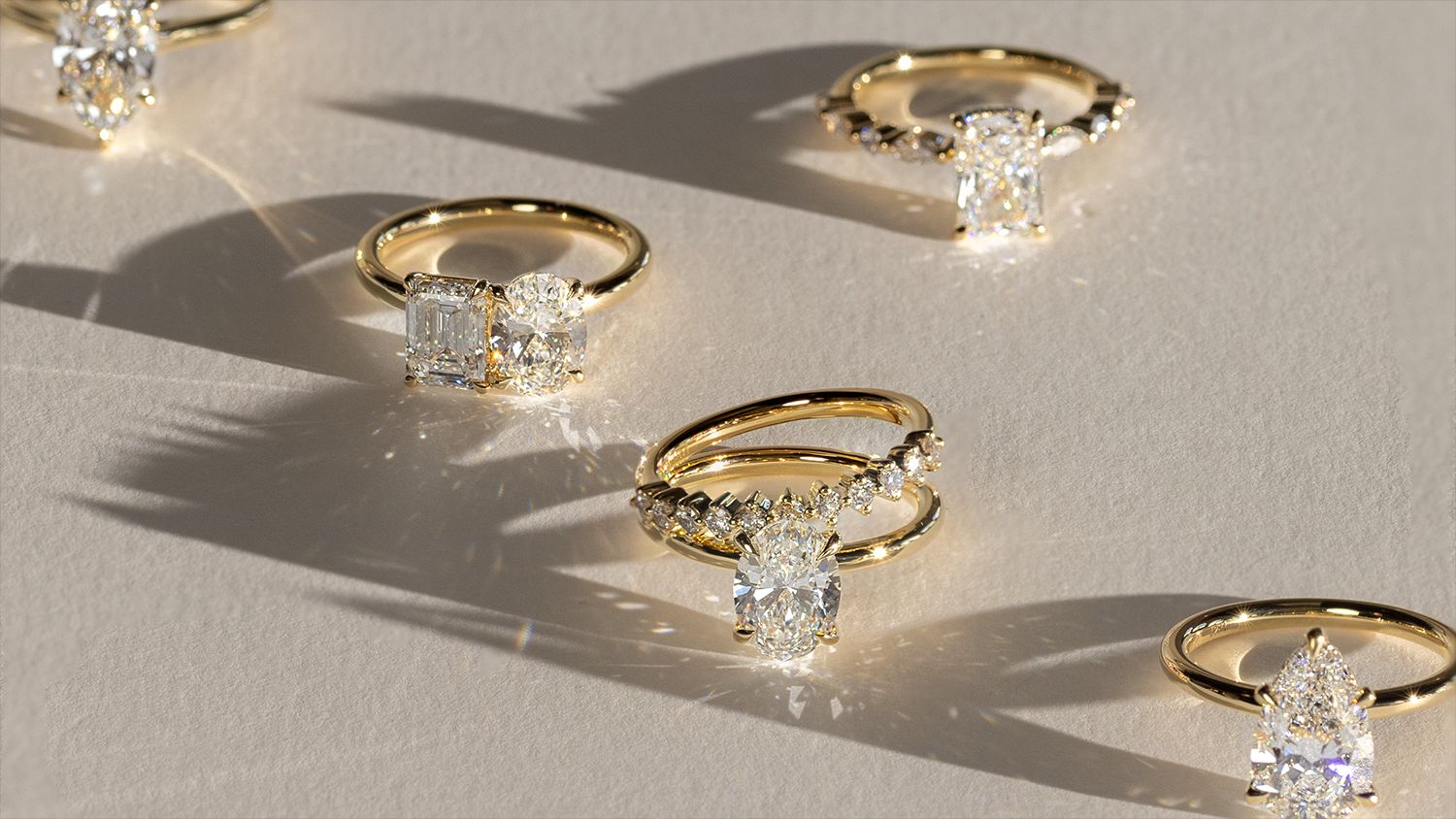What Does Lab Grown Diamonds Mean?
7 Easy Facts About Lab Grown Diamonds Explained
Table of ContentsGetting The Lab Grown Diamonds To WorkSome Known Facts About Lab Grown Diamonds.The Ultimate Guide To Lab Grown DiamondsLab Grown Diamonds Can Be Fun For Anyone
As you travel closer to the Earth's core, pressure and temperature level rise, which develops the excellent oven for carbon to be exchanged diamond (rubies are the only gemstone to be made from simply one component). Through a huge volcanic eruption, these diamonds were transferred to the Planet's surface. It's estimated this procedure was fairly quick (probably over the course of several hours), which allowed the diamonds to remain undamaged without melting.The brief solution: carat weights determine the mass of stones, karats determine the pureness of gold. Carat weight: 1 carat amounts to 0.2 grams, about the weight of a paperclip (next time you see a photo of Mariah Carey's 35 carat weight involvement ring, simply picture the concern of carrying 35 paper clips around your finger everyday).
Here are several of the crucial advantages of lab expanded rubies and laboratory grown diamond jewelry:.
The 30-Second Trick For Lab Grown Diamonds
Put just, natural or earth-mined diamonds are crafted over countless years below the Planet's crust from pure carbon incorporated with pressure and warmth. Producing diamonds in a lab needs the very same procedure, simply fine-tuned to occur over a much smaller sized amount of time in a far more regulated setup.
Whereas earth-mined rubies are uncommon and finite and have a tendency to raise in rate over time, laboratory diamonds are conveniently available. As demand rises, labs can proceed to create lab rubies indicating they are not minimal or scarce contrasted to all-natural diamonds. If you're interested in great fashion jewelry from an investment standpoint, like lab-grown ruby rings, they won't be a great suitable for your requirements.
They could think that the disadvantages of lab-grown rubies outweigh the pros. Some may argue that, for this factor, purchasing a lab-made diamond likewise comes with its moral factors to consider, as doing so takes earnings away from those entailed in the all-natural ruby market that may need it most.
Conventional diamonds count on the Planet's problems to identify their high quality or absence thereof. In a laboratory, manufacturers can directly regulate a diamond's top quality.
The Facts About Lab Grown Diamonds Revealed
You can conveniently locate colored, man-made rubies on the (reasonably) inexpensive side as well as particular cuts that would certainly straight from the source be pricier if you were buying an extracted diamond only. As pointed out, not every insurance plan will certainly safeguard your lab-grown diamond yet that hardly implies it isn't worth safeguarding. Our detailed protection shields you under numerous unfortunate circumstances, from mysterious loss to theft.
all-natural diamonds is that the last is mined from all-natural down payments in the Planet while the former is made in a lab utilizing regulated settings. However their high quality is mostly the exact same. Lab Grown Diamonds. While the distinction in between lab-grown and all-natural diamond options are marginal when it comes to quality, some of the disadvantages of lab-grown diamonds consist of the reality that the rock will depreciate over time and, to some, an absence of nostalgic worth that's typically related to mined rubies
The process includes minimal land disturbance and eliminates worries connected to deforestation and environment devastation. Lab-grown rubies are often extra inexpensive than natural rubies. This cost difference can be associated to the streamlined manufacturing process and the evasion of expenditures connected with traditional mining. The Controlled Environment in Which Laboratory Grown Diamonds Are Developed Enables Regular High Quality.
Convenience in Layout - Lab Grown Diamonds Offer Designers and Customers a Versatile Combination to Develop Unique and Ingenious Fashion Jewelry Layouts - Lab Grown Diamonds. Lab Diamonds Typically Come with A More Transparent Supply Chain.
The Only Guide to Lab Grown Diamonds
Market Perception - In Spite Of Their Identical Physical Properties, Laboratory Diamonds May Face Tests in Market Perception. Some Consumers Still Perceive Natural Diamonds as Having Higher Worth Visit Your URL and Eminence. The Manufacturing of Lab-Grown Diamonds Can Be Energy-Intensive, Especially in Methods Like High Pressure High Temperature level (hpht) and Chemical Vapor Deposition (cvd).
All-natural Rubies Are Created Over Millions of Years Deep Within the Planet, Adding to Their Viewed Rarity. Lab-Grown Rubies, Despite Their Identical Feature, May Not Lug the Same Rarity Aspect, Affecting Their Regarded Value for Some Customers. Effect On Diamond-Dependent Economic Climates - the Change Towards Laboratory Grown Diamonds May Have Financial Implications for Nations and Neighborhoods that Depend Upon The Ruby Mining Market.

Ans. Lab Rubies Are of Equal High Quality to Natural Diamonds in Terms of Firmness, Luster, and Clarity. the Quality of A Diamond, Whether Lab-Grown or Mined, Is Established by Its Cut, Color, Quality, and Carat Weight. Ans. Yes, Lab Diamonds Shimmer Much Like Natural Diamonds. Their Radiance and Glimmer Are a Result of Their Cut and The Way Light Interacts with Their Elements. Ans.